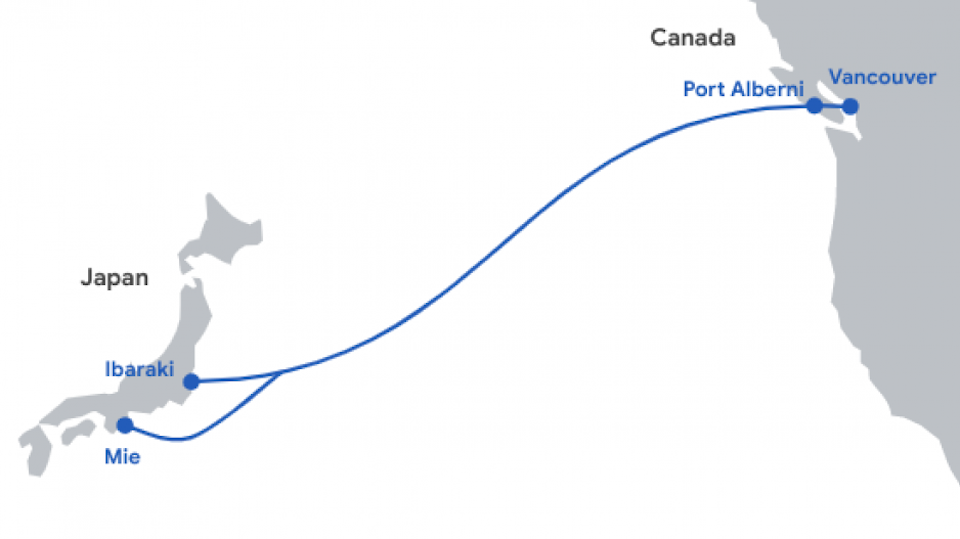Travel between Canada and Japan has faded significantly in the pandemic era but that doesn’t mean the two countries won’t be growing closer in other ways.
Google Canada revealed Wednesday it’s leading the deployment of a new fibre-optic cable connecting B.C. to two prefectures in Japan with aim of having it ready for service by next year.
The Topaz fibre-optic cable will start in Vancouver, run through Port Alberni on Vancouver Island and link up with the Japanese prefectures of Mie and Ibaraki.
While copper cables running under the Pacific have previously connected Vancouver to Hawaii, Australia and New Zealand, Google claims Topaz will be the first fibre-optic cable to connect Canada and Asia.
The cable, garden hose-sized in width, is meant to improve service for Google staples such as Gmail, YouTube and its eponymous search function, as well as boost capacity for network operators in Canada and Japan. It features 16 fibre pairs for a total capacity of 240 terabits per second.
Google declined to disclose to BIV the cost of the project, however, it did confirm that construction began in late 2020.
A 2021 report from Impact Assessment Agency of Canada (IAAC) estimated Canadian installation would be completed within a two-week period. However, that report also estimated installation was to be completed in the late spring of last year.
“The proposed project is not likely to cause significant adverse environmental effects,” the IAAC report stated.
The IAAC also noted the cable will be laid at depths of up to 1,500 metres.
The Topaz project is being built along the traditional territories of the Hupacasath, Maa-nulth, and Tseshaht First Nations.
“This agreement, in which both Google Canada and our Nations benefit, is based on respect for our constitutionally protected treaty and Aboriginal rights and enhances the process of reconciliation,” Chief Charlie Cootes, president of the Maa-nulth Treaty Society, said in a statement.
“We would also like to acknowledge the sensitivity that Google Canada expressed during our talks in regard to the pain and trauma experienced by our people as a result of residential school experience.”
Google isn’t the only organization interested in tapping Vancouver to boost fibre-optic capacity.
Last year Colorado-based Zayo Group Holdings Inc. announced plans to expand its fibre-optic infrastructure between Vancouver and Seattle. The route is the primary fibre path linking Canada and the U.S. along the West Coast.
Zayo’s plans, which also include a network upgrade to 100 gigabytes capacity for faster speeds along the Vancouver-Seattle route, amount to a tripling or even quadrupling of the company’s fibre capacity, according to Dennis Kyle, a senior vice-president of sales at Zayo.
“We’ve got customers that are interested in the additional capacity. But I think beyond that, we believe that Vancouver is kind of becoming more and more of a tech hotbed,” Kyle said last year.
“We believe that there will be ample future business as a result of the ongoing technical development in Vancouver.”
Like Google, Zayo did not divulge how much its project would cost.




